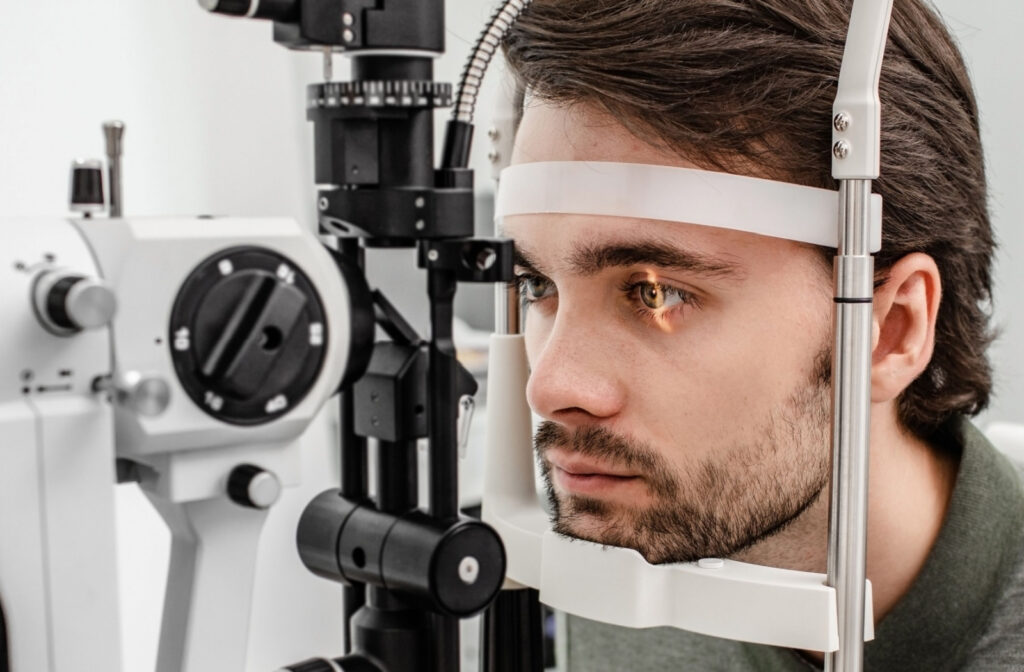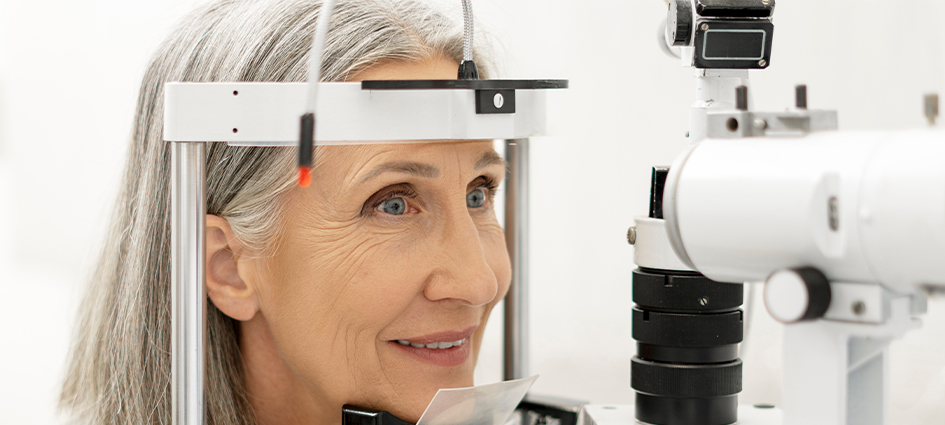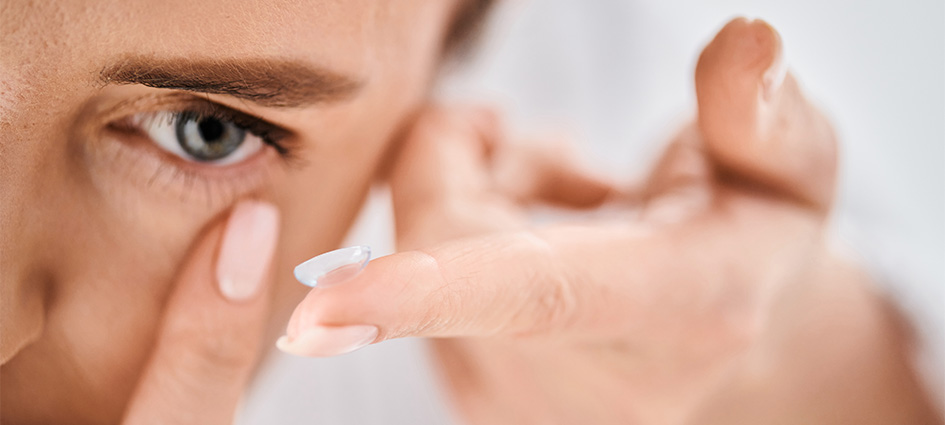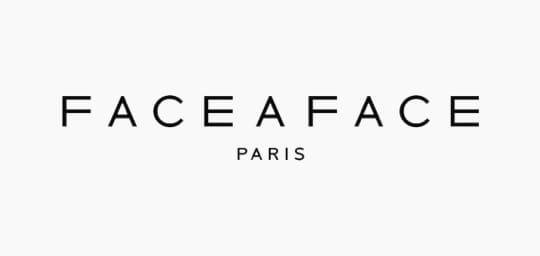Our vision is one of our most important senses. It helps us take in, interact with, and appreciate our world. Regular eye exams help monitor your eye health and detect vision problems early, as many don’t present with symptoms.
The cornea (the eye’s clear outer dome) helps focus light and keep your vision clear. Measuring corneal thickness is essential in helping detect risks of injury, diagnose certain eye diseases, and plan eye surgeries.
Two common ways your optometrist can measure your cornea’s thickness are with ultrasonic pachymetry and optical coherence tomography.
The Function of the Cornea
The cornea is the clear dome-shaped layer in front of the pupil that covers the front part of the eye. It’s composed of 5 layers:
- Epithelium
- Bowman’s layer
- Stroma
- Descemet’s membrane
- Endothelium
The epithelium is the outermost layer of cells that covers and protects the cornea. It absorbs nutrients and oxygen from tears, supplies them to the rest of the cornea, and acts as a barrier against foreign matter.
The cornea as a whole plays a crucial role in the optical system and has several vital functions:
- It helps you see by bending and focusing light onto the retina (the light-sensitive tissue at the back of the eye).
- It acts as a protective covering for the eye, shielding the delicate structures inside from dust, debris, and external irritants.
- It filters some of the sun’s harmful ultraviolet radiation.
The Importance of Measuring Corneal Thickness
Measuring corneal thickness is essential for several reasons, including:
- Assessing corneal endothelial function
- Evaluating patients before and after laser eye surgery
- Measuring intraocular pressure (IOP)
Eye Conditions Impacted by Corneal Thickness
Keratoconus is an eye condition that affects the structure of the cornea. It causes the cornea to thin and bulge into an irregular cone shape. Diagnosing keratoconus includes corneal mapping and measuring corneal thickness.
Glaucoma is an eye disease that shows no early warning signs or symptoms. It’s characterized by irreversible damage to the optic nerve that can lead to vision loss.
High eye pressure can increase your risk for glaucoma. Corneal thickness can mask an accurate reading of eye pressure—a thick cornea can lead to a falsely elevated IOP, and a thin cornea may lead to a falsely low IOP.
A thinner cornea is also a predictive factor for developing open-angle glaucoma. One study shows that a central corneal thickness (CCT) of 555µm or less has a threefold increased risk of developing glaucoma in 5 years compared to someone who has a CCT of more than 588µm.
Methods of Measuring Corneal Thickness
Corneal pachymetry is the measurement of corneal thickness. This measurement can be taken optically or with ultrasound. During a comprehensive eye exam, your eye doctor will use one of these methods to measure your corneal thickness.
Ultrasound Pachymetry
Ultrasound pachymetry (USP) uses ultrasounds to measure corneal thickness using a probe that touches the cornea. During this test, sound waves are emitted and bounce off your cornea’s front and back surfaces. By measuring the time it takes for the sound waves to travel back, the device can calculate how thick the cornea is.
Optical Coherence Tomography
Another method to measure corneal thickness is optical coherence tomography (OCT). While ultrasound pachymetry uses ultrasound waves, OCT uses light.
OCT scans and takes high-resolution cross-sectional images of the cornea. It’s a non-contact and noninvasive tool that helps analyze your cornea’s shape and measures central corneal thickness (CCT) to assist in diagnosing certain eye diseases.
Specular Microscopy
Specular microscopy is a noninvasive method to examine the corneal epithelium, the outermost layer of the cornea. Assessing the corneal epithelium is crucial before high-risk surgeries when comparing various techniques, determining the impact of lasers during refractive surgery, and evaluating a donor cornea before transplantation.
Scheimpflug-Based Corneal Topography
Scheimpflug-based corneal topography is a non-contact method that takes 3D images of the cornea, providing estimates on CCT and IOP.
When to See Your Eye Doctor
There are no notable symptoms of abnormal cornea thickness. Since central corneal thickness can affect your risk of developing sight-threatening diseases like glaucoma, it’s essential to see your optometrist for routine eye exams. Early detection and prompt treatment go a long way in preventing eye damage and preserving your vision. Schedule an appointment with Cowichan Eyecare for detecting and monitoring glaucoma and other eye conditions.














